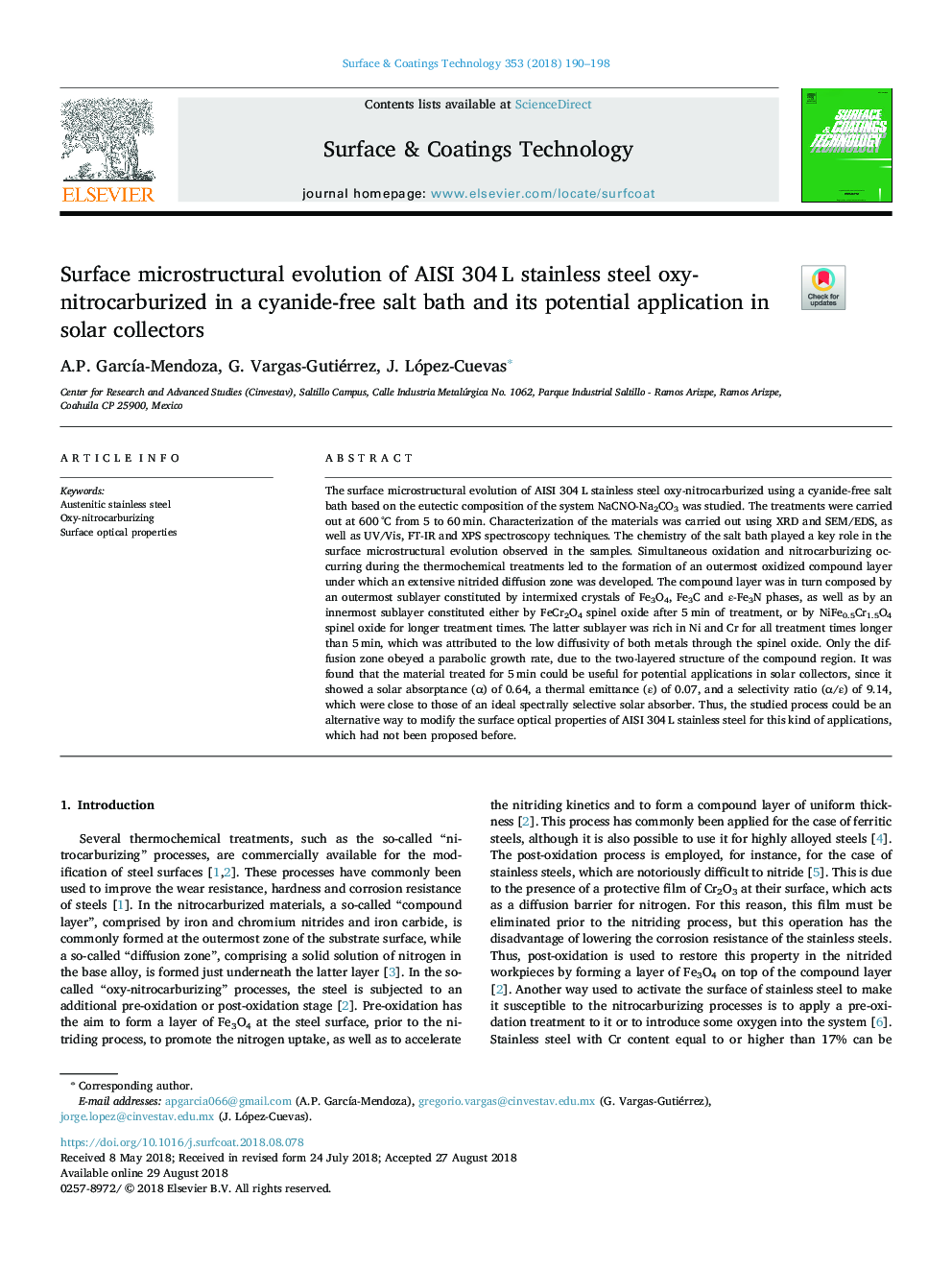| کد مقاله | کد نشریه | سال انتشار | مقاله انگلیسی | نسخه تمام متن |
|---|---|---|---|---|
| 10142403 | 1646098 | 2018 | 9 صفحه PDF | دانلود رایگان |
عنوان انگلیسی مقاله ISI
Surface microstructural evolution of AISI 304â¯L stainless steel oxy-nitrocarburized in a cyanide-free salt bath and its potential application in solar collectors
دانلود مقاله + سفارش ترجمه
دانلود مقاله ISI انگلیسی
رایگان برای ایرانیان
موضوعات مرتبط
مهندسی و علوم پایه
مهندسی مواد
فناوری نانو (نانو تکنولوژی)
پیش نمایش صفحه اول مقاله

چکیده انگلیسی
The surface microstructural evolution of AISI 304â¯L stainless steel oxy-nitrocarburized using a cyanide-free salt bath based on the eutectic composition of the system NaCNO-Na2CO3 was studied. The treatments were carried out at 600â¯Â°C from 5 to 60â¯min. Characterization of the materials was carried out using XRD and SEM/EDS, as well as UV/Vis, FT-IR and XPS spectroscopy techniques. The chemistry of the salt bath played a key role in the surface microstructural evolution observed in the samples. Simultaneous oxidation and nitrocarburizing occurring during the thermochemical treatments led to the formation of an outermost oxidized compound layer under which an extensive nitrided diffusion zone was developed. The compound layer was in turn composed by an outermost sublayer constituted by intermixed crystals of Fe3O4, Fe3C and ε-Fe3N phases, as well as by an innermost sublayer constituted either by FeCr2O4 spinel oxide after 5â¯min of treatment, or by NiFe0.5Cr1.5O4 spinel oxide for longer treatment times. The latter sublayer was rich in Ni and Cr for all treatment times longer than 5â¯min, which was attributed to the low diffusivity of both metals through the spinel oxide. Only the diffusion zone obeyed a parabolic growth rate, due to the two-layered structure of the compound region. It was found that the material treated for 5â¯min could be useful for potential applications in solar collectors, since it showed a solar absorptance (α) of 0.64, a thermal emittance (ε) of 0.07, and a selectivity ratio (α/ε) of 9.14, which were close to those of an ideal spectrally selective solar absorber. Thus, the studied process could be an alternative way to modify the surface optical properties of AISI 304â¯L stainless steel for this kind of applications, which had not been proposed before.
ناشر
Database: Elsevier - ScienceDirect (ساینس دایرکت)
Journal: Surface and Coatings Technology - Volume 353, 15 November 2018, Pages 190-198
Journal: Surface and Coatings Technology - Volume 353, 15 November 2018, Pages 190-198
نویسندگان
A.P. GarcÃa-Mendoza, G. Vargas-Gutiérrez, J. López-Cuevas,